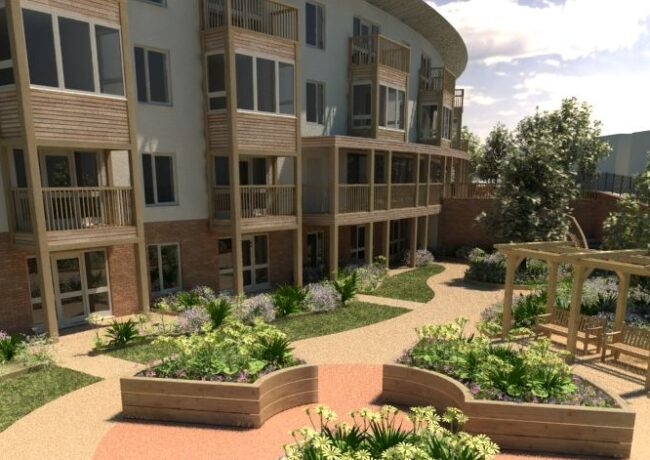Special report: Minding the age gap
 In the second of our series on the changing face of social housing during the austerity era, published in association with KPMG and Hill Dickinson, we look at the market for older people.
In the second of our series on the changing face of social housing during the austerity era, published in association with KPMG and Hill Dickinson, we look at the market for older people.
The UK population is ageing at a rapid rate with the fastest population increase in the number of those aged 85 and over. Since 1984, the number of over 85s has more than doubled reaching 1.4m in 2009 according to government statistics.
This is important to affordable housing providers as now one fifth of older people households – classified as those where the main householder is aged 50 and above – rents from the social sector.
As this group lives longer with long-term conditions such as dementia, social housing providers are twigging that this demographic is one whose specific needs must be catered for.
The flip side is that fitter, more active older people have become more demanding. They expect high standards and this means integrated services for housing, support and advice focused on wellbeing to help remain healthier for longer. Gone are the days of high-backed chairs in a circle at an old people's home. Today, hair salons, nail bars, gyms and bistros are the glamorous fascia for older people's building complexes.
Sean Stafford, director of development and investment at New Charter Housing Trust, based in Ashton-under-Lyne, confirms this trend. He says retirement villages, which despite so many being put on hold because of the recession, are growing in popularity. These will often be fronted by bungalows for sale, flats in the middle run by a registered provider with a dementia unit at the back.
New Charter is building a 31-flat mini retirement village, Beatrix House, due for completion around October 2011 which it believes responds to customer demands for more independent living: "We've given the flavour of what you'd expect in a retirement village. So instead of having a communal dining area, you bring that facility to the front of the building and step it up a bit making it into a bistro with nicer furniture and servery and you make it open to the public as well." This means that relatives can join residents for mealtimes.
Stafford adds that while the banks have always been favourable to housing associations because they are seen as low risk, this has changed slightly of late.
"Banks are becoming more cautious even to sectors that were traditionally seen as very secure – for instance, we're building 31 units, we'll probably have 2-300 applications for them. We don't want for customers, we just need more property.
"But despite the fact that demand is there, they're still cautious about lending… now they want a better return for their money, a bigger margin." He adds: "Securing funding is challenging but we believe in the products and we are sure that the banks will return to the market in the coming months."
Liverpool-based Plus Dane Housing Group completed a £5.9m extra-care scheme for retired people in Congleton, Cheshire, called Heath View in spring. It has 45 one- and two-bedroomed apartments with facilities including a hair salon, bistro, and health and well-being suite.
Claire Griffiths, managing director of regenerational and commercial development, describes Heath View as a high demand investment which "will be a real asset to a town like Congleton providing high quality accommodation to older people". Congleton has a very high demographic of older people as high house prices have forced younger people out of town.
While the units, developed at a high capital cost will "appeal" and make people want to move there, she says, this may also prove a stumbling block in immediate months: "Therein lies the problem for the future in that they're not going to be attractive to funders because of the cost because older people, quite rightly, have much higher expectations.
"The high capital costs of older people's bespoke accommodation is not going to be attractive to the Treasury at the moment and it's a shame because it flies in the face of trying to get people out of deprived housing – it's only by offering a really attractive alternative to older people are we going to do that."
What are banks' attitudes to lending? "We're fortunate in that the banks still see housing associations generally as good credit and we're seen as low risk because we're regulated," says Griffiths. "It's a huge benefit to us to be regulated in that sense, it makes us attractive business to lenders." However she adds that there are only five or six big lenders in the market place, "so in times of tighter credit, the terms are not as favourable as they used to be".
Griffiths says that Plus Dane would like to provide more older people's accommodation but there will be less in the short term because diminished grant funding will make those schemes seem poor value.
Advisors to the social housing sector are watching the rules change for a traditionally secure part of the property industry. Graham Archibald, partner at Hill Dickinson, says: "As the implications of the spending cuts and uncertainty pending conclusion of the regulatory review in the housing sector start to filter through there is undoubtedly a greater caution on the part of funders to commit. Even straightforward transactions that a couple of years ago would have proceeded without a moment's hesitation are now coming under great scrutiny. The income stream of housing sector bodies was once considered secure, this is no longer the case. The bodies have to rely more heavily on their own resources and existing funding streams, or bring on board other parties to further the transaction, bypassing the need to underwrite funding on their own."
Bringing on board others could be a short step towards merger and joint ventures for many RSL's struggling for a strategy of their own.
Bill Enevoldson, partner and head of social housing at KPMG, adds: "Banks see the sector as relatively low risk but some RSLs have probably reached the limit of their borrowing capacity. It will be interesting to see if this leads to some consolidation in the sector."
Back at the 'coalface' the RSLs and local authorities are doing the best they can. Andy Kippax, senior manager of strategic housing services for Stockport Council says that the council, in partnership with local housing associations and arm's length management organisation Stockport Homes, is in the process of reviewing its joint strategy and offer on older people's housing. As part of this, they discovered an oversupply of bedsits which older people do not want any more and which they are phasing out.
"Thirty years ago people didn't expect central heating," he says about changing demands. "We're remodeling lots of existing accommodation to improve it so we're getting rid of the bedsits and remodeling them as self-contained flats to Decent Homes standard."
He adds that Stockport's partnership is also building extra care accommodation which involves mainly remodeling the inside of existing social rented blocks and adding extensions when necessary.
Demand has been high – their first shared ownership scheme finished at the height of the recession in November 2008 has had all its units sold. "We've had difficulty getting grant [since the start of 2010]. That's been the challenge," he says.
There is no shortage of older people seeking social housing places but unlocking the mechanics of funding is a growing challenge.




